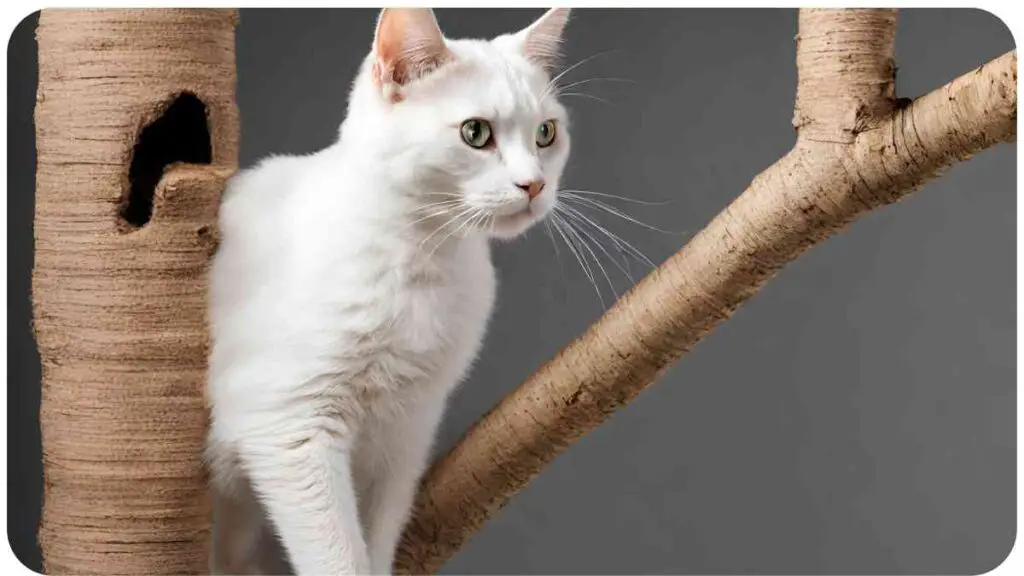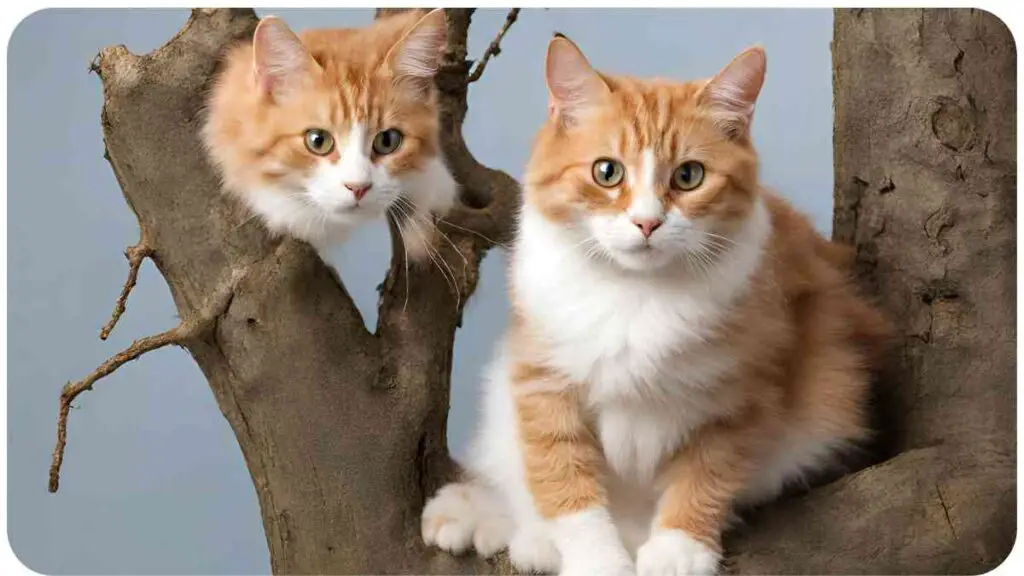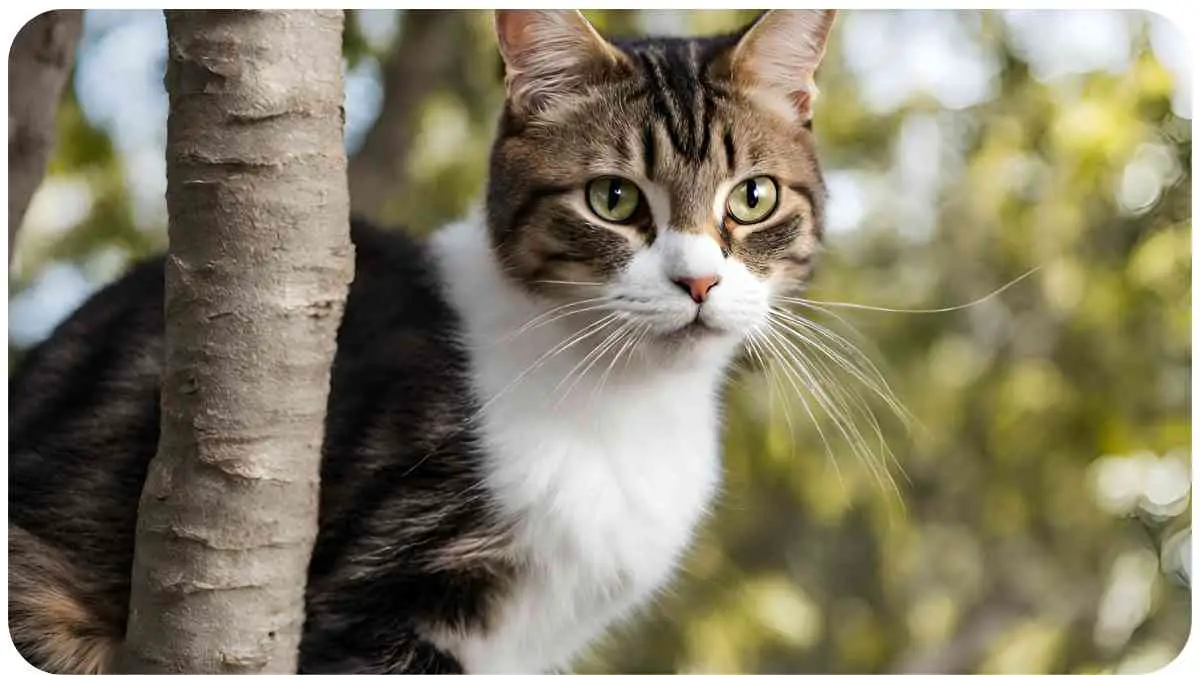Welcome, cat lovers! If you’ve noticed your cat climbing a tree wobbling more than usual, you’re not alone. Many pet owners face the challenge of maintaining stability in their feline friends’ favorite furniture.
In this guide, we’ll delve into the reasons behind this wobbliness and provide practical solutions to ensure your cat’s climbing tree remains sturdy and safe.
| Takeaways |
|---|
| 1. Prioritize stability to ensure your cat’s safety and enjoyment. |
| 2. Assess your cat climbing tree for signs of wobbliness and wear. |
| 3. DIY solutions such as adding braces and tightening screws can enhance stability. |
| 4. Consider upgrading to a high-quality climbing tree for long-term stability. |
| 5. Consult with experts if stability issues persist or seem complex. |
Understanding the Importance of Stability
Before we jump into troubleshooting, let’s discuss why stability is crucial for your cat’s climbing tree. Cats are natural climbers and love to explore vertical spaces.
A wobbly tree not only jeopardizes their safety but also diminishes their enjoyment and confidence in using it. Imagine if your favorite hiking trail suddenly became unstable it wouldn’t be as enjoyable, right? The same goes for our feline companions.
When your cat climbing tree feels unstable, fear not! Explore our guide for “quick fixes” Litter Robot Stuck: Quick Fixes for Common Issues to ensure your feline’s playtime remains uninterrupted.
Common Causes of Wobbliness
Several factors can contribute to the wobbliness of your cat climbing tree. Let’s take a closer look at some common culprits:
| Cause | Description |
|---|---|
| Wear and Tear | Over time, the materials of the climbing tree may degrade, leading to instability. |
| Incorrect Assembly | Improper assembly can result in weak joints or loose connections. |
| Size Mismatch | Choosing a climbing tree that’s too small or large for your cat can affect stability. |
| Uneven Weight Distribution | Cats tend to favor certain platforms, causing uneven weight distribution. |
| Flimsy Base | A weak or narrow base can make the entire tree prone to tipping over. |
Understanding these causes can help you pinpoint the issue with your cat’s climbing tree and take appropriate action.
Assessing Your Cat Climbing Tree

Now that we’ve identified potential causes, let’s assess your cat climbing tree’s stability. Take a moment to observe the tree and look for any signs of wobbliness or wear. Are there any loose parts or areas of concern? This initial assessment will guide our troubleshooting process.
Stay tuned for practical DIY solutions and tips to upgrade your cat climbing tree for optimal stability and your cat’s enjoyment!
Is your cat’s GPS collar acting up? Navigate through our troubleshooting tips to resolve common issues and keep your furry friend safe and sound. Discover more about it here: Troubleshooting Common Issues with Your Cat’s GPS Collar.
DIY Stability Solutions
If you’ve identified issues with your cat climbing tree, don’t worry! There are several DIY solutions you can implement to enhance its stability. Let’s explore some easy fixes:
Adding Braces and Supports
One effective way to stabilize a wobbly cat climbing tree is by adding additional braces or supports. You can use sturdy materials such as wood or metal to reinforce weak joints or areas prone to wobbliness. Secure these braces with screws or adhesive for added stability. Think of it as giving your climbing tree a supportive hug!
Tightening Screws and Bolts
Over time, screws and bolts can become loose due to regular use or vibrations. Take a moment to inspect all the connections on your cat climbing tree and tighten any loose screws or bolts with a screwdriver or wrench. This simple step can make a significant difference in preventing wobbliness and ensuring your cat’s safety.
Unlock the mystery behind why your cat’s microchip door isn’t recognizing them. Our guide offers insights and solutions to ensure seamless entry for your feline friend. Learn more: Why Isn’t Your Cat’s Microchip Door Recognizing Them?.
Weight Distribution
Encourage your cat to explore different platforms and levels of the climbing tree to distribute their weight evenly. You can entice them with treats or toys to explore new areas and discourage them from favoring specific platforms. By promoting balanced usage, you can minimize the risk of wobbliness caused by uneven weight distribution.
Adding Weight to the Base
If you’ve noticed that the base of your cat climbing tree is too narrow or lightweight, consider adding additional weight to stabilize it. You can use sandbags, heavy books, or weighted bases specifically designed for this purpose. Make sure the added weight is evenly distributed to prevent tipping and improve overall stability.
Reinforcing Platforms
Inspect the platforms and perches on your cat climbing tree for any signs of wear or weakness. You can reinforce these areas by adding extra support underneath or replacing damaged parts with sturdier materials. Consider using plywood or strong fabric to strengthen platforms and ensure they can withstand your cat’s playful antics.
Tired of incessant alerts on your pet monitor? Discover how to silence notifications without hassle. Follow our guide to activate silent mode effortlessly: Silent Mode on Pet Monitors: How to Turn Off Alerts and Notifications.”
Upgrading Your Cat Climbing Tree

While DIY solutions can be effective, sometimes it’s worth investing in a high-quality cat climbing tree designed for stability and durability. Look for features such as a wide and sturdy base, reinforced joints, and durable materials that can withstand your cat’s climbing adventures.
Investing in a premium climbing tree not only provides peace of mind but also ensures your cat’s safety and enjoyment for years to come.
Stay tuned for more tips on how to upgrade your cat climbing tree and keep it wobble-free!
Consulting with Experts
Sometimes, despite our best efforts, addressing stability issues with a cat climbing tree can be challenging. In such cases, don’t hesitate to seek advice from experts in pet furniture or cat behavior. Veterinarians, animal behaviorists, and professional pet furniture designers can offer valuable insights and recommendations tailored to your specific situation.
Consulting with a Veterinarian
If your cat shows reluctance to use the climbing tree or exhibits signs of discomfort while using it, it’s essential to rule out any underlying health issues. Schedule a check-up with your veterinarian to ensure your cat is in good health and discuss any concerns related to their behavior or mobility. Your vet can also offer guidance on choosing a suitable climbing tree based on your cat’s age, size, and activity level.
Concerned about the durability of your Petsafe collars in wet conditions? Dive into our comprehensive analysis of waterproof features to ensure your pet’s safety and comfort. Learn more about it here: Can Petsafe Collars Get Wet? Understanding Waterproof Features.
Seeking Advice from Animal Behaviorists
Animal behaviorists specialize in understanding and addressing behavioral issues in pets, including their interactions with furniture and surroundings. Consulting with an animal behaviorist can help you identify the root cause of your cat’s reluctance to use the climbing tree and develop strategies to encourage positive behavior.
They can also provide guidance on creating an enriching environment that stimulates your cat’s natural instincts and promotes overall well-being.
Collaborating with Pet Furniture Designers
Pet furniture designers and manufacturers are experts in creating functional and aesthetically pleasing products tailored to pets’ needs and preferences. Reach out to reputable designers or companies specializing in cat furniture and discuss your concerns regarding stability issues. They can recommend products or modifications designed to enhance stability and ensure your cat’s safety and comfort.
Conclusion
Maintaining stability in your cat climbing tree is essential for ensuring your feline friend’s safety and enjoyment. By understanding the common causes of wobbliness and implementing practical solutions, you can create a secure and inviting space for your cat to explore and relax. Whether you opt for DIY fixes, upgrade to a premium climbing tree, or seek advice from experts, prioritizing stability will enhance your cat’s quality of life and strengthen your bond with them.
Remember to observe your cat’s behavior and preferences regularly, and don’t hesitate to seek professional guidance if needed. With the right approach and attention to detail, you can create a wobble-free environment that encourages your cat to climb, play, and thrive.
If you have any questions or would like further assistance with troubleshooting stability issues in your cat climbing tree, feel free to reach out to us. Happy climbing!
Further Reading
Here are some additional resources for further reading on troubleshooting stability issues with cat climbing trees:
- How to Make a Cat Tree More Stable: This comprehensive guide from Catster provides practical tips and techniques for enhancing the stability of your cat tree, ensuring your feline friend’s safety and enjoyment.
- Wobbly Cat Tree Thread: Join the discussion on TheCatSite forum to learn from other pet owners’ experiences and find solutions to common wobbly cat tree issues.
- How to Fix a Wobbly Cat Tree: BetterWithCats offers step-by-step instructions and expert advice on addressing stability issues with your cat tree, helping you create a stable and secure environment for your furry companion.
FAQs
How can I determine if my cat climbing tree is wobbly?
- You can assess the stability of your cat climbing tree by gently shaking it and observing any swaying or rocking motion. Additionally, look for signs of wear, loose connections, or uneven weight distribution.
What are some common causes of wobbliness in cat climbing trees?
- Common causes of wobbliness include wear and tear, incorrect assembly, size mismatch, uneven weight distribution, and a flimsy base. Identifying these factors can help pinpoint the issue and guide troubleshooting efforts.
Can I fix a wobbly cat climbing tree myself?
- Yes, many stability issues with cat climbing trees can be addressed through DIY solutions such as adding braces, tightening screws and bolts, promoting balanced weight distribution, and reinforcing platforms. However, if the problem persists or seems complex, consulting with experts may be necessary.
How can I encourage my cat to use a wobbly climbing tree?
- Encouraging your cat to explore the climbing tree with treats, toys, or gentle encouragement can help build their confidence and familiarity with the structure. Creating a comfortable and inviting environment with cozy bedding or catnip can also entice them to climb and play.
When should I seek professional help for stability issues with my cat climbing tree?
- If DIY solutions fail to address the wobbliness or if your cat shows signs of discomfort or reluctance to use the tree, it’s advisable to seek advice from veterinarians, animal behaviorists, or pet furniture designers. They can offer personalized recommendations and solutions based on your cat’s needs and behavior.

I’m Dr. Hellen James, a professional veterinarian with a deep interest in the ways that litter size affects the health of animals. I’ve spent years studying this subject and performing research on reproduction in many different kinds of creatures.


